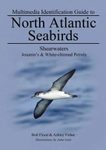Edited By: Christa PH Mulder, Wendy B Anderson, David R Towns and Peter J Bellingham
492 pages, 33 b/w photos, 42 b/w illustrations, 1 b/w map
![Seabird Islands Seabird Islands]()
Click to have a closer look
About this book
Contents
Customer reviews
Biography
Related titles
About this book
Islands with large colonies of seabirds are found throughout the globe. Seabird islands provide nesting and roosting sites for birds that forage at sea, deposit marine nutrients on land, and physically alter these islands. Habitats for numerous endemic and endangered animal and plant species, seabird islands are therefore biodiversity hotspots with high priority for conservation. Successful campaigns to eradicate predators (e.g., rats and cats) from seabird islands have been conducted worldwide. However, removal of predators will not necessarily lead to natural recovery of seabirds or other native species. Restoration of island ecosystems requires social acceptance of eradications, knowledge of how island food webs function, and a long-term commitment to measuring and assisting the recovery process.
This book, written collaboratively by and for ecologists and resource managers, provides the first large-scale cross-system compilation, comparison, and synthesis of the ecology of seabird island systems. Offering a new conceptual framework into which to fit the impacts of seabirds on island ecology, this is an essential resource for academics and resource managers alike.
Contents
Preface
Acknowledgments
PART I: NATURAL HISTORY OF SEABIRD ISLANDS
1: An Introduction to Seabird Islands
2: Seabirds as Ecosystem Engineers: Nutrient Inputs and Physical Disturbance
3: Impacts of Introduced Predators on Seabirds
4: Direct Impacts of Seabird Predators on Island Biota Other Than Seabirds
PART II: CROSS-SYSTEM COMPARISONS OF ISLAND ECOSYSTEMS
5: Impacts of Seabirds on Plant and Soil Properties
6: Effects of Seabirds on Plant Communities
7: Effects of Seabirds on Island Consumers
8: Effects of Seabird-Derived Nutrients on Aquatic Systems
9: Indirect Effects of Introduced Predators on Seabird Islands
PART III: RESTORATION OF SEABIRD ISLANDS
10: Eradication of Invasive Seabird Predators on Seabird islands
11: Recovery and Restoration on Seabird Islands
12: The Social Dimension - Public Involvement in Seabird Island Restoration
13: The State of Seabird Island Ecology: Current Synthesis and Global Outlook
Appendix A: Descriptions of Focal Island Systems
Appendix B: Seabird species
Appendix C: Seabird predators
Glossary
Index
Customer Reviews
Biography
Christa Mulder is a plant ecologist who works primarily on plant-animal interactions, including muskox grazing in the Canadian Arctic, goose herbivory on saltmarsh plants in Alaska, and the impacts of seabirds on islands in New Zealand. She is Associate Professor in Ecology at the University of Alaska Fairbanks.
Wendy Anderson is a community ecologist who studies plant-nutrient interactions on spring ephemeral herbs in deciduous forests, and food webs on islands in the Gulf of California, Mexico and the San Juan Islands in the Pacific Northwest of the United States. She is currently a Professor of Biology and Environmental Science at Drury University in Springfield, Missouri.
David Towns is a conservation biologist studying the effects of invasive pests, methods and effectiveness of pest removals, and restoration of natural communities on islands around New Zealand. He is a Senior Scientist with the Department of Conservation and is based in Auckland, New Zealand.
Peter Bellingham is a forest ecologist who studies the consequences of disturbance and biological invasions for plant community dynamics and ecosystem function, including hurricane and typhoon effects in rain forests, and seabird and rat effects on islands. He is a research scientist at Landcare Research in Lincoln, near Christchurch, New Zealand.
Edited By: Christa PH Mulder, Wendy B Anderson, David R Towns and Peter J Bellingham
492 pages, 33 b/w photos, 42 b/w illustrations, 1 b/w map


































